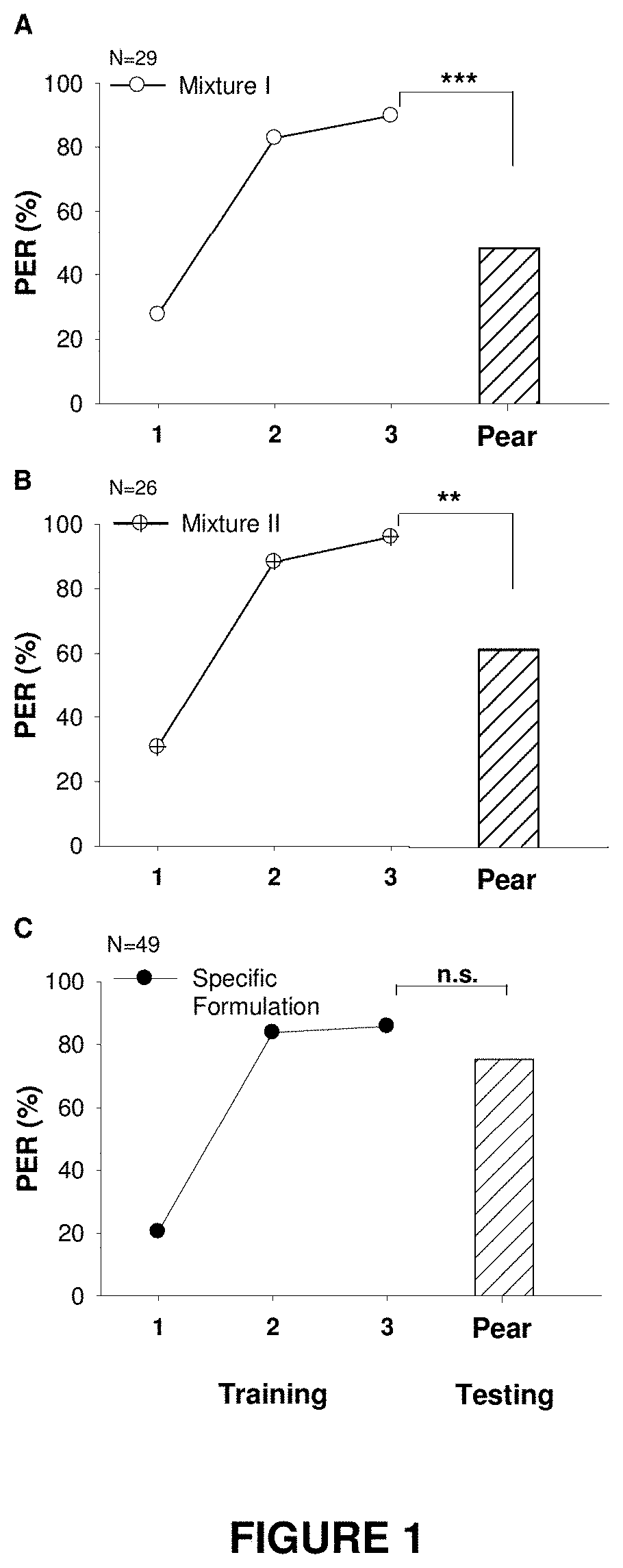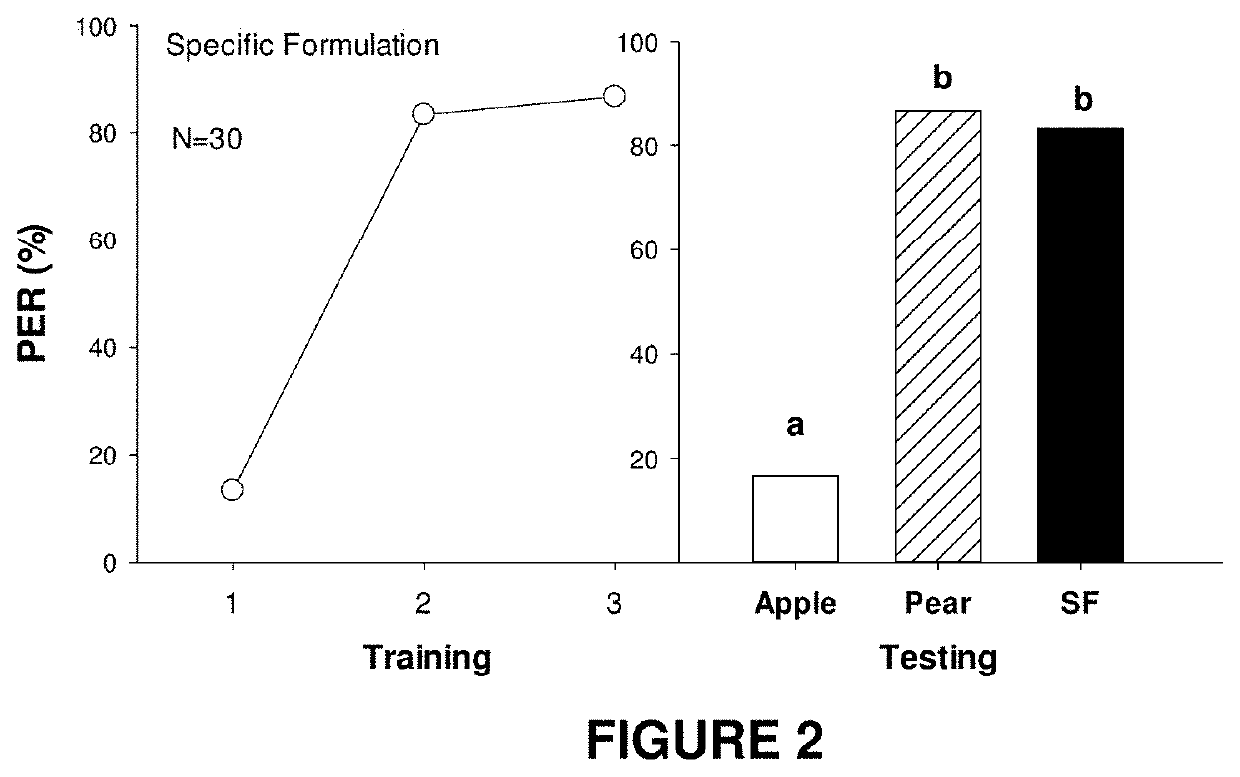Formulation for promoting targeted pollination of pear tree crops in honey bees
- Summary
- Abstract
- Description
- Claims
- Application Information
AI Technical Summary
Benefits of technology
Problems solved by technology
Method used
Image
Examples
example 1
on of the Formulations
[0054]In order to obtain the pear natural floral fragrance used in the following Examples, pear or apple (respectively) buds (flowers that are close to opening their petals or have very recently opened them) were placed in a clean glass container with two orifices that allow the generation of an air current to drag the flowers' volatiles. Said current is delivered to the bees' antennae and is used as a conditioned, non-rewarded stimulus, conditioned rewarded stimulus or testing odor.
[0055]3 different formulations were prepared, in each of them the 3 present volatile compounds in the pear tree flower were combined, identified by Baraldi et al. 1999 (Phys. Chem. Earth B. 24, 6, 729-732). The composition of each of the formulations was the following:[0056]Formulation I: 15% 2-ethylhexanol, 55% linalool, 30% limonene.[0057]Formulation II: 24% 2-ethylhexanol, 35% linalool, 41% α-pinene.[0058]Formulation III: 24% limonene, 35% linalool, 41% α-pinene.
example 2
f the Formulations Using Olfactive Conditioning
[0059]An absolute olfactory conditioning was executed to evaluate the bees' ability to differentiate the pear tree natural floral odor from other scents. Each bee used in the trial was tied to a harness and presented with the scent in evaluation linked to a reward (Reward-conditioned Stimulus, EC+), and were also presented with the pear tree natural floral odor without a reward (Non Reward-conditioned Stimulus, EC−). The odors were presented in a pseudo-random order. The evaluated scents (EC+) were: A) Formulation I from Example 1 (n=29), B) Formulation II from Example 1 (n=30), and C) Formulation III (Specific Formulation) from Example 1 (n=49). In all cases, non-rewarded control (EC−) was the pear tree natural floral odor obtained as described in Example 1. The ability to differentiate EC+ from EC− was evaluated based on the bees' proboscis extension response (PER).
[0060]By the end of the conditioning, the bees were able to differenti...
example 3
n of Formulations Through Differential Olfactory Conditioning
[0061]An absolute olfactory conditioning was executed to evaluate the bees' ability to differentiate the pear natural floral odor from the apple floral odor and Formulation III (Specific Formulation). Harnessed bees (n=30) were trained by being presented with Formulation III (Specific Formulation) of example 1 linked to a reward. By the end of the conditioning, the bees were presented with Formulation III (Specific Formulation) and two unfamiliar scents: The apple natural floral odor and the pear natural floral odor, and the bees' proboscis extension response (PER) was evaluated. As it happened in the experiment described in Example 2, the bees conditioned with Formulation III (Specific Formulation), after being presented with the pear tree natural floral odor showed a PER similar to that observed in the last presentation of the conditioning, indicating that they could not differentiate Formulation 3 from the pear natural ...
PUM
 Login to View More
Login to View More Abstract
Description
Claims
Application Information
 Login to View More
Login to View More - R&D
- Intellectual Property
- Life Sciences
- Materials
- Tech Scout
- Unparalleled Data Quality
- Higher Quality Content
- 60% Fewer Hallucinations
Browse by: Latest US Patents, China's latest patents, Technical Efficacy Thesaurus, Application Domain, Technology Topic, Popular Technical Reports.
© 2025 PatSnap. All rights reserved.Legal|Privacy policy|Modern Slavery Act Transparency Statement|Sitemap|About US| Contact US: help@patsnap.com



